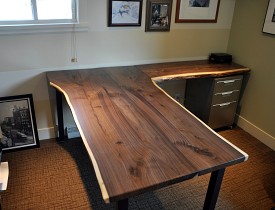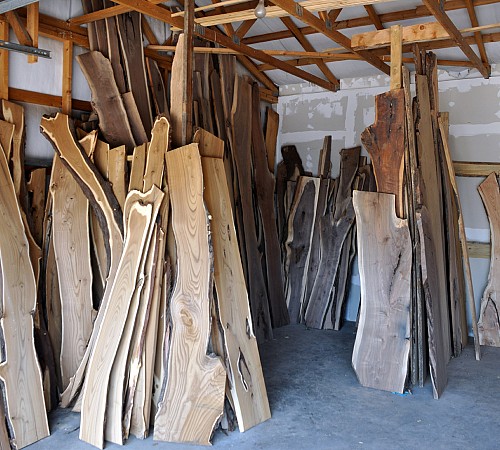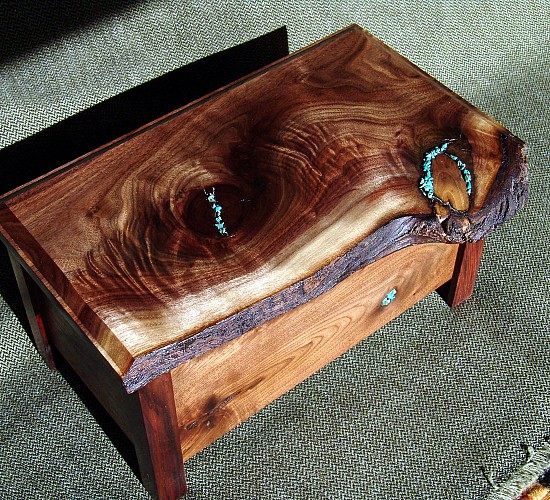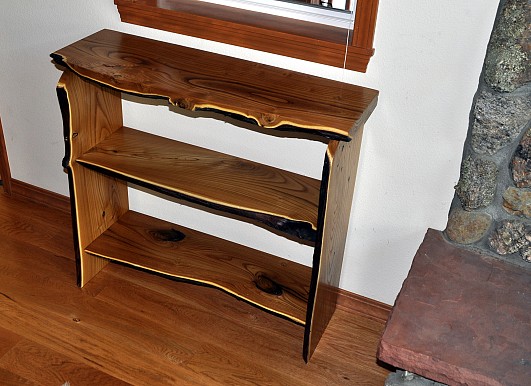Native Edge Furniture

Native edge furniture is made from slabs of wood, which are sanded smooth – all except the edge, which is left in the unique shape designed by Nature. Also known as “natural edge” or “live edge,” this attractively rustic style often comes complete with a strip of the original bark. Over the years, building native edge furniture continues to be one of my favorite projects.
Not just for log cabins
Just as log cabins evoke a rustic feel, native edge furniture and woodworking does it as well, but on a much smaller and portable scale. Most of the challenges with working with native edge lumber have to deal with the overall design. Because some edges are far more rustic than others, this can greatly influence the project.
A majority of the lumber I use for my native edge work is locally sawn and processed. This is good on a few fronts…native or locally sourced materials are "greener" that those that may be shipped hundreds, if not thousands, of miles.

Another advantage is that this wood is acclimated to my local climate. I have done lots of repair work on formal furniture that has traveled from humid tropical locations to the high, dry regions where my Denver-area carpentry clients live. Wood movement and poor engineering lead to disaster in some pieces. Building with solid stable material and using time-tested methods that can accommodate wood movement are keys to furniture longevity.
Processing the lumber
My primary native lumber supplier sells two basic forms of material. The first is raw, basically right off the stack of sawn boards. This lumber is cut on site using a band saw mill and then stacked into a flitch. This is great if you want to keep the color and grain texture the same as you can build an entire project (book matched in some cases) from a single tree.
The other form that they sell has been minimally processed. In most cases, this lumber may have been ripped on one side and/or run through a planer. With planed stock, it is a lot easier to see the grain patterns. Most of my purchases, however, are in the raw state. Thirty plus years of woodworking have given me an eye to see grain in the raw, plus a shop full of tools to convert rough wood into furniture.
Depending on the size of the boards and the scope and scale of the project, I will use a combination of hand and power tools to convert nature's bounty in workable and beautiful pieces of art. Each board is unique and therefore, each project is one of a kind.
Here are two samples of what can be created with native edge material.


Updated April 11, 2018.
Looking for a Pro? Call us (866) 441-6648

Carpentry Average Costs
Carpenters Experiences

My Awesome New Deck Built Off My Master Bedroom

My Deck Repair Was Simple But Perfect



